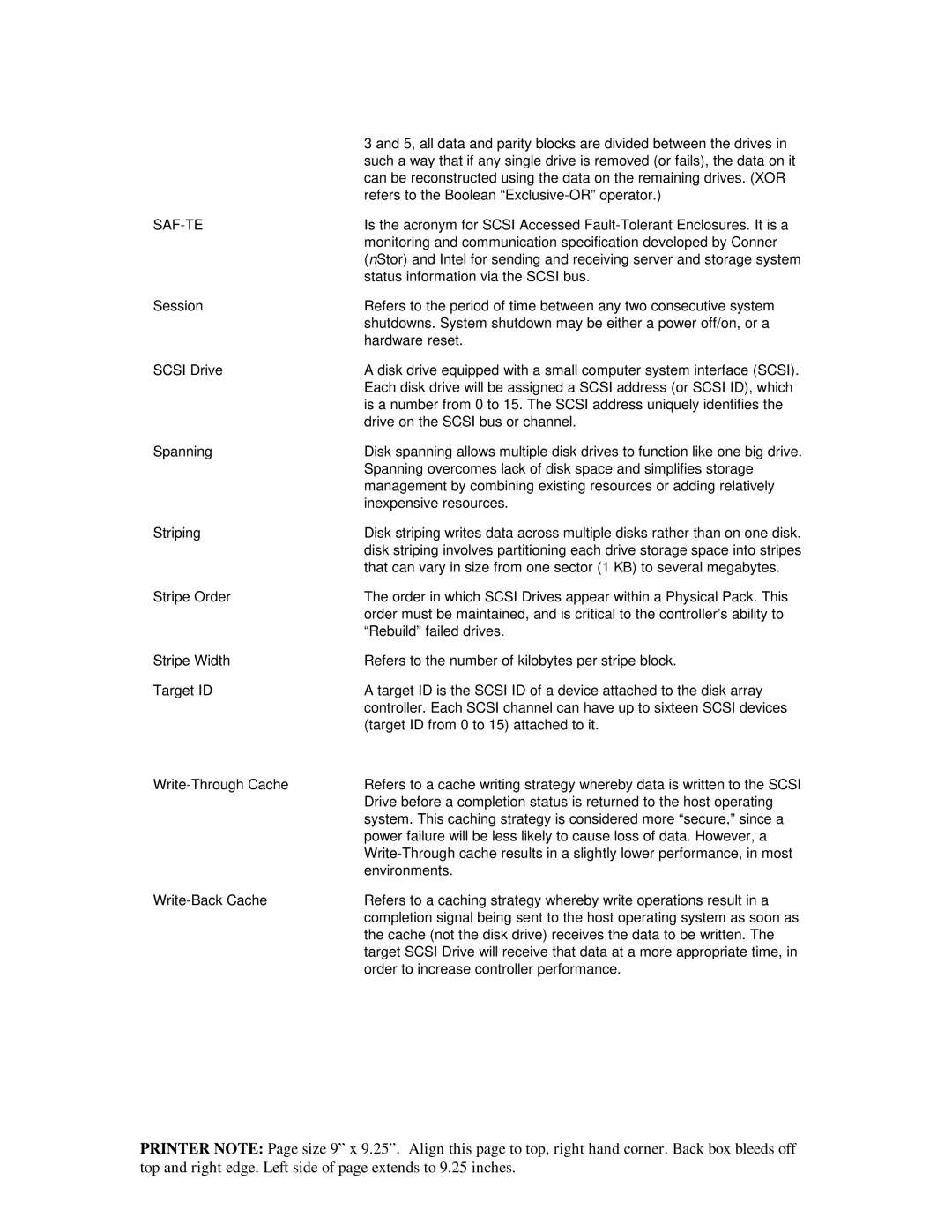| 3 and 5, all data and parity blocks are divided between the drives in |
| such a way that if any single drive is removed (or fails), the data on it |
| can be reconstructed using the data on the remaining drives. (XOR |
| refers to the Boolean |
| Is the acronym for SCSI Accessed |
| monitoring and communication specification developed by Conner |
| (nStor) and Intel for sending and receiving server and storage system |
| status information via the SCSI bus. |
Session | Refers to the period of time between any two consecutive system |
| shutdowns. System shutdown may be either a power off/on, or a |
| hardware reset. |
SCSI Drive | A disk drive equipped with a small computer system interface (SCSI). |
| Each disk drive will be assigned a SCSI address (or SCSI ID), which |
| is a number from 0 to 15. The SCSI address uniquely identifies the |
| drive on the SCSI bus or channel. |
Spanning | Disk spanning allows multiple disk drives to function like one big drive. |
| Spanning overcomes lack of disk space and simplifies storage |
| management by combining existing resources or adding relatively |
| inexpensive resources. |
Striping | Disk striping writes data across multiple disks rather than on one disk. |
| disk striping involves partitioning each drive storage space into stripes |
| that can vary in size from one sector (1 KB) to several megabytes. |
Stripe Order | The order in which SCSI Drives appear within a Physical Pack. This |
| order must be maintained, and is critical to the controller’s ability to |
| “Rebuild” failed drives. |
Stripe Width | Refers to the number of kilobytes per stripe block. |
Target ID | A target ID is the SCSI ID of a device attached to the disk array |
| controller. Each SCSI channel can have up to sixteen SCSI devices |
| (target ID from 0 to 15) attached to it. |
Refers to a cache writing strategy whereby data is written to the SCSI | |
| Drive before a completion status is returned to the host operating |
| system. This caching strategy is considered more “secure,” since a |
| power failure will be less likely to cause loss of data. However, a |
| |
| environments. |
Refers to a caching strategy whereby write operations result in a | |
| completion signal being sent to the host operating system as soon as |
| the cache (not the disk drive) receives the data to be written. The |
| target SCSI Drive will receive that data at a more appropriate time, in |
| order to increase controller performance. |
PRINTER NOTE: Page size 9” x 9.25”. Align this page to top, right hand corner. Back box bleeds off top and right edge. Left side of page extends to 9.25 inches.
